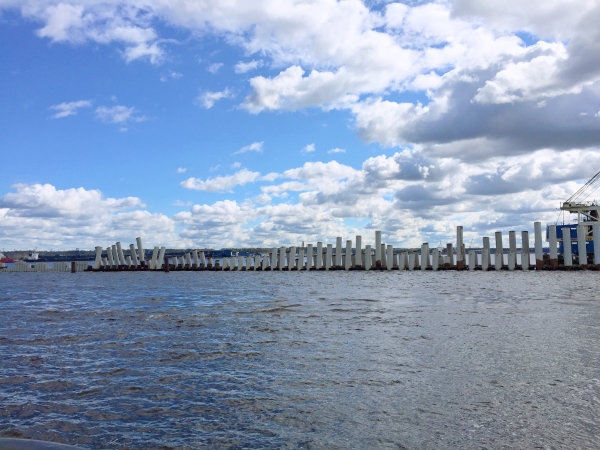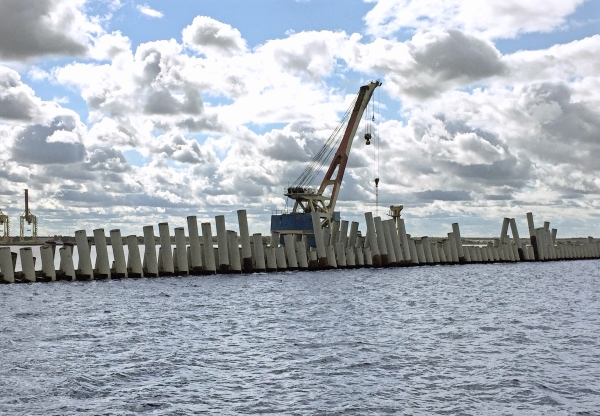New breakwater based on large diameter piles to Port of Ust-Luga in Russia
Ust-Luga Port is the biggest and deepest port of the Baltic Sea, including the Baltic States and Finland.
The port developer, JSC Ust-Luga Company, was established in 1992 to construct Ust-Luga Commercial Sea Port with a capacity of 180 million tons of various cargo per year in the Baltic Sea, namely in Luga Bay of the Gulf of Finland.
In order to protect the port activities from the sea, a 1300 m long breakwater, made first shortly as a ballast embankment and mainly as a large diameter pile structure, was constructed in stages between 2013 and 2017.
The breakwater structure consists of 1020x12 mm pipe-pipe wall connected by LPB180 interlocks and 1220x12 mm inclined piles on the both sides of the wall. The upper parts of the piles have been coated in a facility close to the port. Piles were installed by using vibratory hammers and finally by impact hammers, if needed. After installation the upper parts of the piles were concreted and tied together by cast-in-place concrete superstructure.
Figure 1. Breakwater, made first shortly as a ballast embankment and mainly as a large diameter pile structure, was 1300 m long.
SSAB’s delivery scope to it’s client ThyssenKrupp Infrastructure GmbH has been consisting of 650 pcs of LPB180 interlocked piles 1020x12 mm, 5 600 ton (14 800 m in total) and 475 pcs of 1220x12 mm, 4 100 ton (11 400 m in total). The piles have been produced and the interlock welding has been taken place in SSAB’s Oulainen factory in Finland during 2014-2016. All piles for each stage have been loaded in dedicated vessels for delivery straight into Ust-Luga.
Figure 2. SSAB’s delivery scope has been consisting of 650 pcs of LPB180 interlocked piles 1020x12 mm, 5 600 ton and 475 pcs of 1220x12 mm, 4 100 ton.
The designed interlocked pipe-pipe wall structure requires that the individual pile elements will have strict out-of-roundness tolerances after welding. Thanks to the state-of-the-art interlock welding lines in Oulainen and long-term & extensive experience on interlock welding, the EN 1090 certified factory was able to meet the end-customer’s expectations.
“We chose SSAB because of the convenient location of the pipe production, short delivery time and good quality” explains Tatjana Detzel, Head of Department Export at TKBT.
Załączniki
Kategorie i tagi

